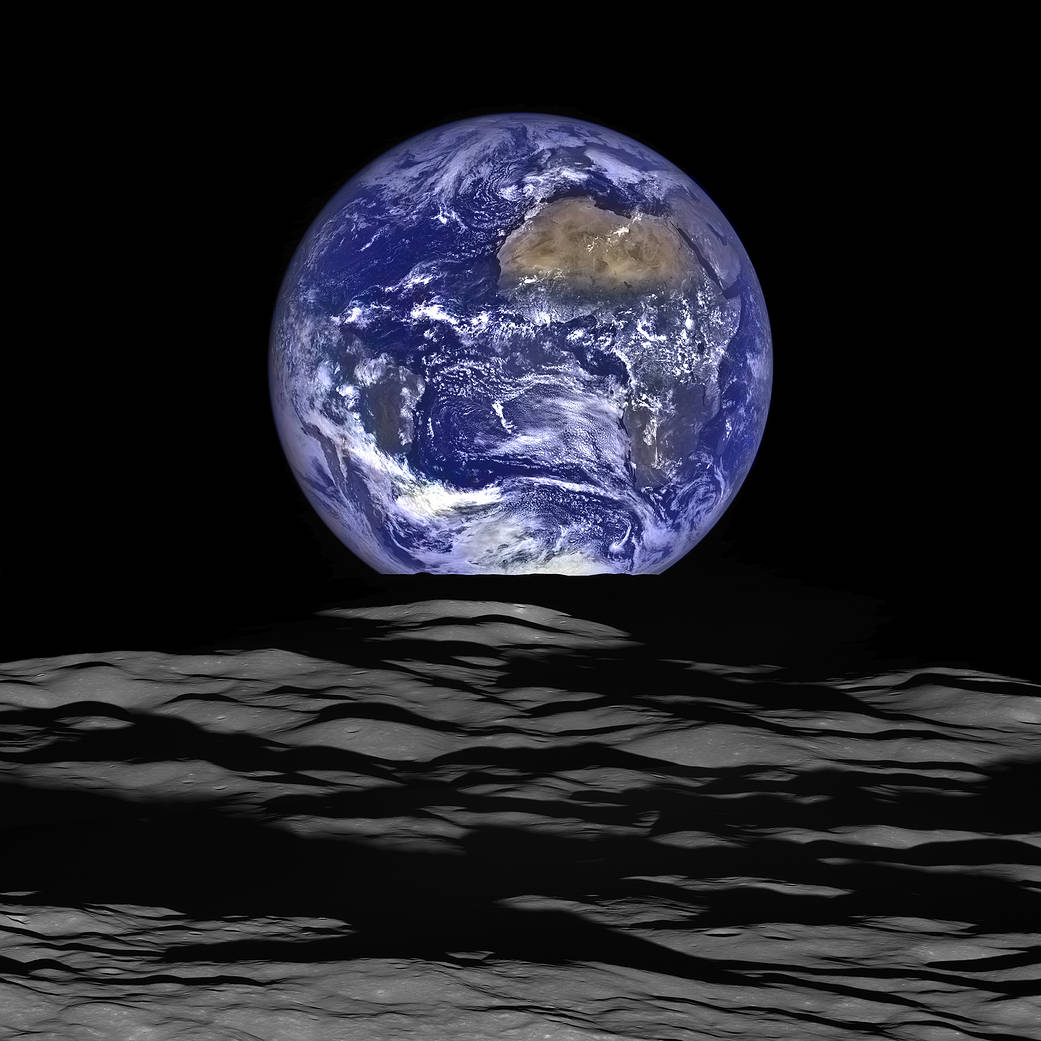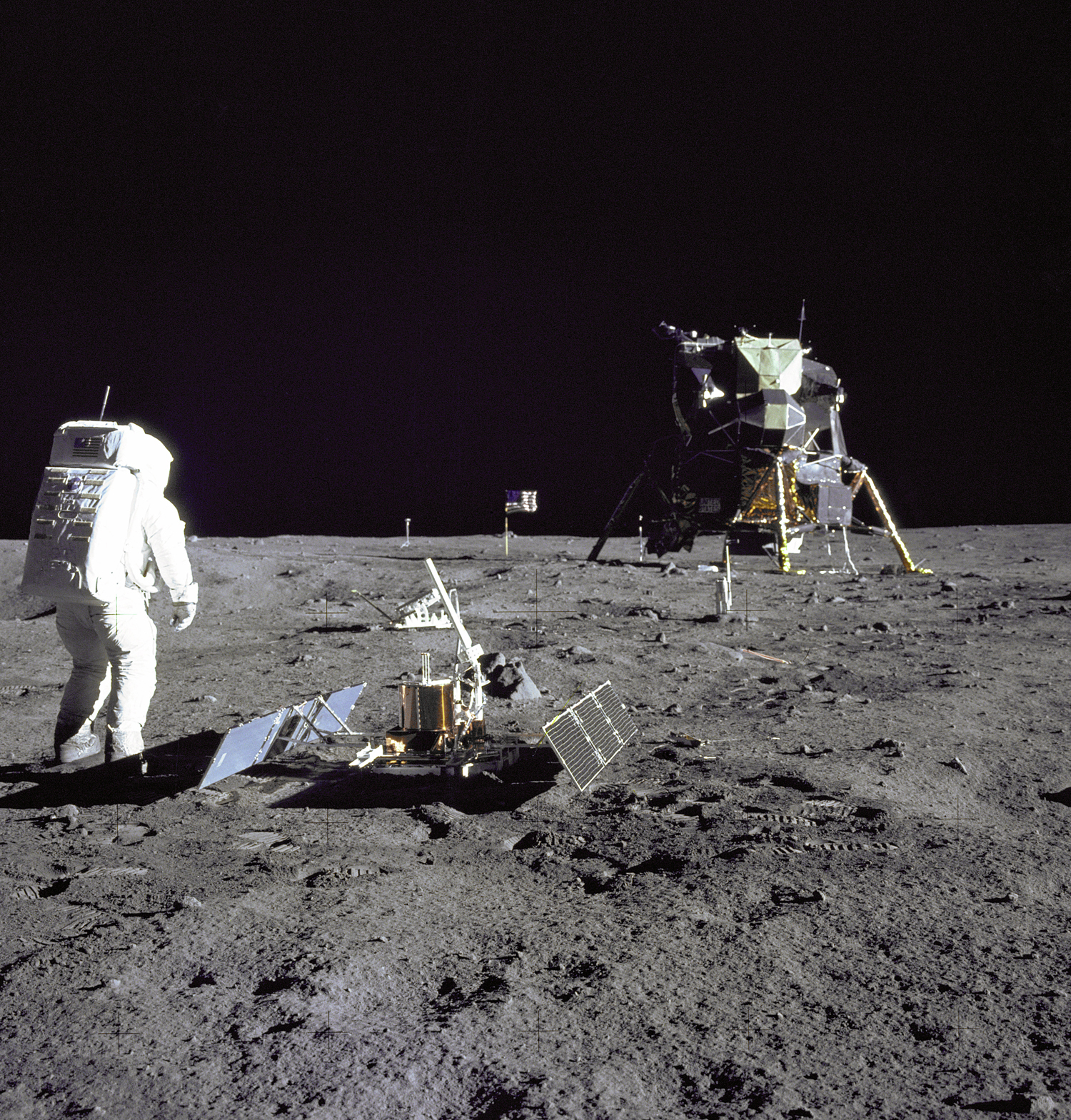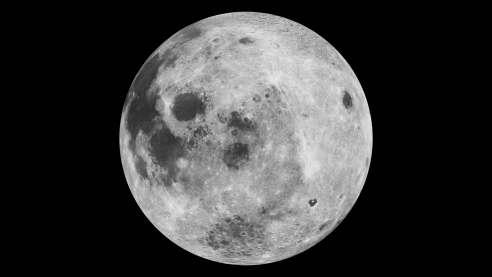President Kennedy’s famous “We choose to go to the Moon” speech to a crowd of 40,000 people on 12th September 1962 resonated widely with the American population and dampened some of the disquiet about the cost and value of the Moon-landing effort. It also started the space race with the Soviet Union. To quote Kennedy, “We set sail on this new sea because there is new knowledge to be gained, and new rights to be won, and they must be won and used for the progress of all people. For space science, like nuclear science and all technology, has no conscience of its own.”
When Apollo 11 successfully landed on the Moon on 20th July 1969 (20:17 GMT), history was made. Arguably this was the most important event for humankind and certainly one of the most important events of the 20th century. Astronauts Neil Armstrong and Buzz Aldrin, who spent 21.5 hours on the Moon, including 2.5 hours for an extra-vehicular activity (EVA) at the lunar surface, and the command module pilot Michael Collins became national and international heroes, and their exploits effectively ended the space race.
Perhaps their most important task was to collect samples of the lunar surface. Apollo 11 returned 22kg of lunar samples to Earth.
During the EVA, Armstrong and Aldrin performed several experiments including a soil mechanics investigation to study the properties of the lunar soil, a solar wind composition experiment, a passive seismic experiment to detect lunar ‘moonquakes’, and a laser ranging retroreflector to very precisely measure the distance between the Earth and Moon. But perhaps their most important task was to collect samples of the lunar surface. Apollo 11 returned 22kg of lunar samples to Earth.
The Apollo 11 landing was the first of six successful landings on the Moon – a phase of exploration which ended on 14th December 1972 when the lunar module of Apollo 17 lifted off from the lunar surface. In this short period of time, 12 men walked on the lunar surface, and with the help of wheeled transport in the later missions they collected 2,200 samples (rocks and soils) weighing 382kg.
To this day, those samples are continuing to be used to provide important clues into the origin and evolution of the Moon. Planetary scientists at The Open University are at the forefront of that work, and for the 50th anniversary have been working with NASA to produce a virtual microscope collection of over 550 rocks collected during the Apollo missions. These detailed images are a starting point for many investigations worldwide and show how important the Apollo samples still are to the scientific community. Indeed, NASA lunar curators often use virtual microscope images when allocating samples for new
investigations.
At The Open University, virtual microscope images are being used as part of a search for water on the Moon. The conventional view has been that the Moon is devoid of water, but in 2008, a journal article led by Dr Alberto
Saal from the Brown University.
Data from these apatites and melt inclusions suggest the presence of a water reservoir in the Moon similar to that of certain regions in the Earth’s interior.
USA reported first direct detection of ‘water’ (measured as hydroxyl, OH) in lunar volcanic glasses. Almost coincidentally, remote detection of ‘water’ (present either as OH or H2O) was reported by scientists working with data collected by the NASA’s Moon Mineralogy Mapper spectrometer which was on board the first Indian Space Research Organisation orbiter mission to the Moon (Chandrayaan-1).
Over the past decade, our team at The Open University has been undertaking cutting-edge laboratory research to look for water (and other associated volatiles such as C, N, O, S and Cl) in Apollo samples and on lunar meteorites. We find it in one of the accessory minerals found in lunar rocks – the mineral apatite, and inclusions of melt trapped during the early stages of magma cooling. To be precise, we don’t find ‘water’, the molecule H2O. Rather, we find hydrogen in the form of a hydroxyl anion, OH.
Data from these apatites and melt inclusions suggest the presence of a water reservoir in the Moon similar to that of certain regions in the Earth’s interior. Furthermore, the isotopic composition of water in the lunar samples points towards water in the Moon having a common origin with that of the Earth, and the majority of this water seemed to have been delivered by asteroidal material as opposed to cometary sources. Nevertheless, this field of research remain very active as many new questions have arisen through recent findings. Therefore, understanding the origin and evolution of the Moon is very much a work in progress, and samples brought back by Apollo missions continue to play a vital role in this endeavour.
 NASA's Lunar Reconnaissance Orbiter (LRO) recently captured a unique view of Earth from the spacecraft's vantage point in orbit around the moon.
NASA's Lunar Reconnaissance Orbiter (LRO) recently captured a unique view of Earth from the spacecraft's vantage point in orbit around the moon.
This article was originally published in the Summer 2019 edition of The Geographer - the newsletter of the Royal Scottish Geographical Society.






Rate and Review
Rate this article
Review this article
Log into OpenLearn to leave reviews and join in the conversation.
Article reviews